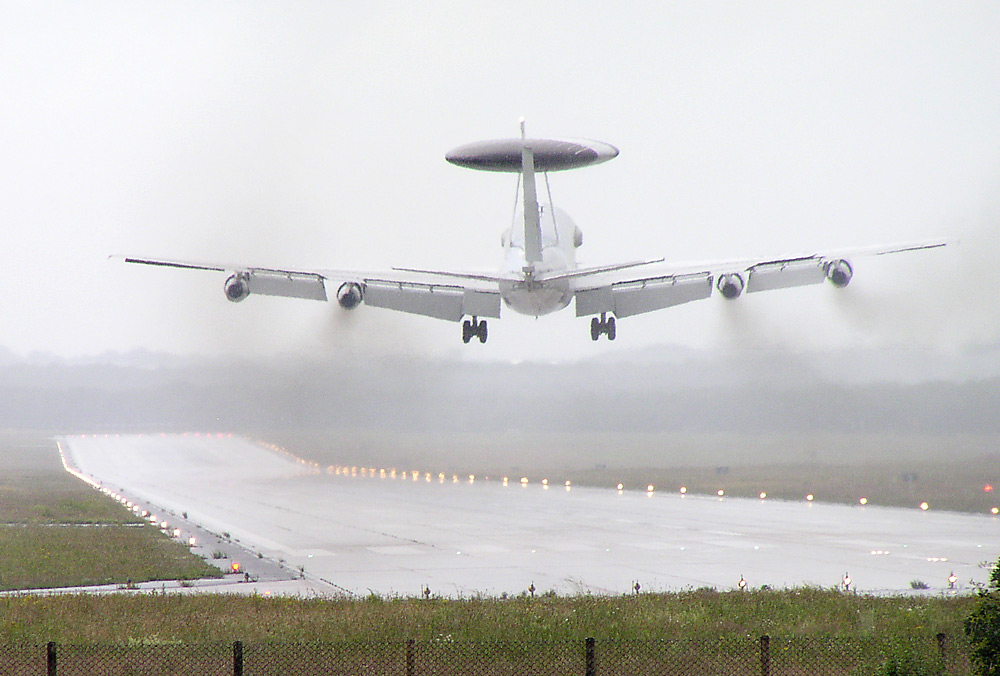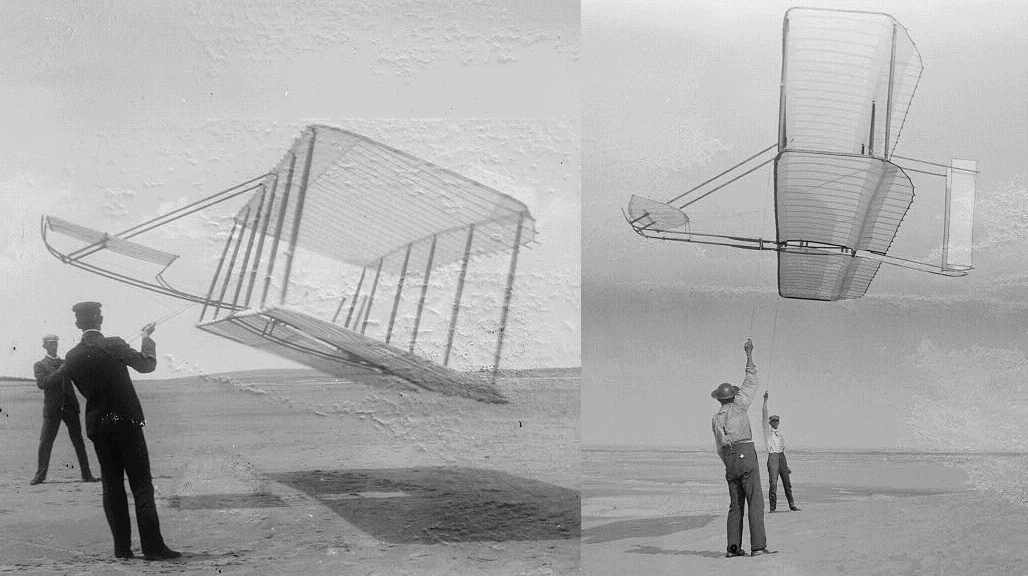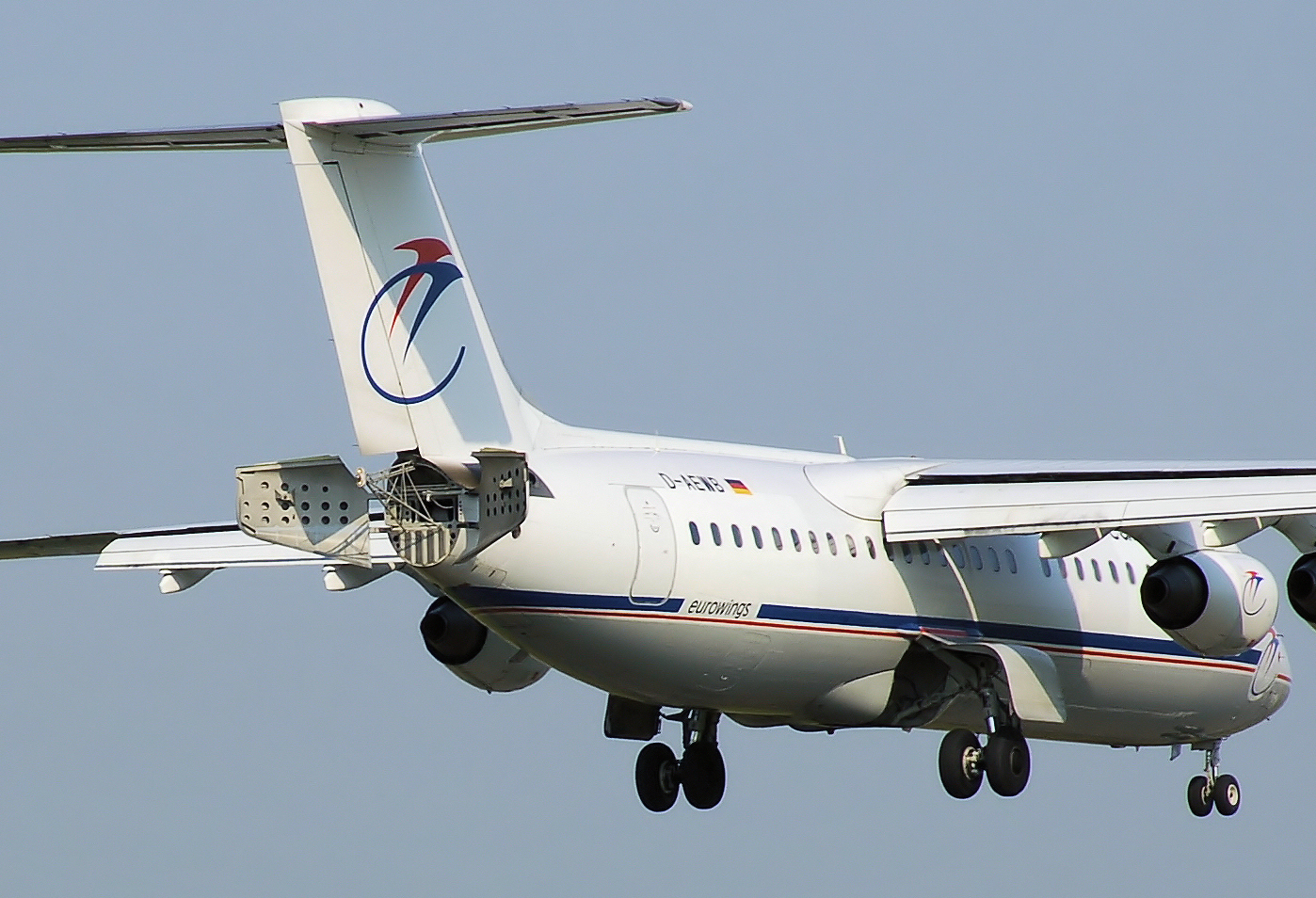|
Alighting
Landing is the last part of a flight, where a flying animal, aircraft, or spacecraft returns to the ground. When the flying object returns to water, the process is called alighting, although it is commonly called "landing", "touchdown" or "splashdown" as well. A normal aircraft flight would include several parts of flight including taxi, takeoff, climb, cruise, descent and landing. Aircraft Aircraft usually land at an airport on a firm runway or helicopter landing pad, generally constructed of asphalt concrete, concrete, gravel or grass. Aircraft equipped with pontoons (floatplane) or with a boat hull-shaped fuselage (a flying boat) are able to land on water. Aircraft also sometimes use skis to land on snow or ice. To land, the airspeed and the rate of descent are reduced such that the object descends at a low enough rate to allow for a gentle touch down. Landing is accomplished by slowing down and descending to the runway. This speed reduction is accomplished by redu ... [...More Info...] [...Related Items...] OR: [Wikipedia] [Google] [Baidu] |
Helicopter Landing Pad
A helipad is a landing area or platform for helicopters and powered lift aircraft. While helicopters and powered lift aircraft are able to operate on a variety of relatively flat surfaces, a fabricated helipad provides a clearly marked hard surface away from obstacles where such aircraft can land safely. Larger helipads, intended for use by helicopters and other vertical take-off and landing aircraft (VTOL), may be called ''vertiports.'' An example is Vertiport Chicago, which opened in 2015. Usage Helipads may be located at a heliport or airport where fuel, air traffic control and service facilities for aircraft are available. Most helipads are located remote from populated areas due to sounds, winds, space and cost constraints. However, some skyscrapers maintain a helipad on their roofs in order to accommodate air taxi services. Some basic helipads are built on top of highrise buildings for evacuation in case of a major fire outbreak. Major police departments may use a d ... [...More Info...] [...Related Items...] OR: [Wikipedia] [Google] [Baidu] |
Crosswind
A crosswind is any wind that has a perpendicular component to the line or direction of travel. This affects the aerodynamics of many forms of transport. Moving non-parallel to the wind's direction creates a crosswind component on the object and thus increasing the apparent wind on the object; such use of cross wind travel is used to advantage by sailing craft, kiteboarding craft, power kiting, etc. On the other side, crosswind moves the path of vehicles sideways and can be a hazard. Definition When winds are not parallel to or directly with/against the line of travel, the wind is said to have a crosswind ''component''; that is, the force can be separated into two vector components: * the headwind or tailwind component in the direction of motion, * the crosswind component perpendicular to the former. A vehicle behaves as though it is directly experiencing a lateral effect of the magnitude of the crosswind component only. The crosswind component is computed by multiplying the win ... [...More Info...] [...Related Items...] OR: [Wikipedia] [Google] [Baidu] |
Light Aircraft
A light aircraft is an aircraft that has a maximum gross takeoff weight of or less.Crane, Dale: ''Dictionary of Aeronautical Terms, third edition'', page 308. Aviation Supplies & Academics, 1997. Light aircraft are used as utility aircraft commercially for passenger and freight transport, sightseeing, photography, and other roles, as well as personal use. Examples of aircraft that are at the maximum gross takeoff weight for this category include the de Havilland Canada DHC-6 Twin Otter and Beechcraft B200 Super King Air. Uses Uses include aerial surveying, such as monitoring pipelines, light cargo operations, such as "feeding" cargo hubs, and passenger operations. Light aircraft are used for marketing purposes, such as banner towing and skywriting, and flight instruction. The majority of personal aircraft are light aircraft, the most popular in history being the Cessna 172, and most popular in modern history being the Cirrus SR22 and Robinson R44. Larger light aircraft, ... [...More Info...] [...Related Items...] OR: [Wikipedia] [Google] [Baidu] |
Transport Canada
Transport Canada (french: Transports Canada) is the department within the Government of Canada responsible for developing regulations, policies and services of road, rail, marine and air transportation in Canada. It is part of the Transportation, Infrastructure and Communities (TIC) portfolio. The current Minister of Transport is Omar Alghabra. Transport Canada is headquartered in Ottawa, Ontario. History The Department of Transport was created in 1935 by the government of William Lyon Mackenzie King in recognition of the changing transportation environment in Canada at the time. It merged three departments: the former Department of Railways and Canals, the Department of Marine, and the Civil Aviation Branch of the Department of National Defence (c. 1927 when it replaced the Air Board) under C. D. Howe, who would use the portfolio to rationalize the governance and provision of all forms of transportation (air, water and land). He created a National Harbours Board and Trans-C ... [...More Info...] [...Related Items...] OR: [Wikipedia] [Google] [Baidu] |
Conventional Landing Gear
Conventional landing gear, or tailwheel-type landing gear, is an aircraft undercarriage consisting of two main wheels forward of the center of gravity and a small wheel or skid to support the tail.Crane, Dale: ''Dictionary of Aeronautical Terms, third edition'', page 133. Aviation Supplies & Academics, 1997. From the Ground Up, 27th edition, page 11 The term taildragger is also used, although some argue it should apply only to those aircraft with a tailskid rather than a wheel. The term "conventional" persists for historical reasons, but all modern jet aircraft and most modern propeller aircraft use tricycle gear. History In early aircraft, a tailskid made of metal or wood was used to support the tail on the ground. In most modern aircraft with conventional landing gear, a small articulated wheel assembly is attached to the rearmost part of the airframe in place of the skid. This wheel may be steered by the pilot through a connection to the rudder pedals, allowing the rudd ... [...More Info...] [...Related Items...] OR: [Wikipedia] [Google] [Baidu] |
Tricycle Gear
Tricycle gear is a type of aircraft undercarriage, or ''landing gear'', arranged in a tricycle fashion. The tricycle arrangement has a single nose wheel in the front, and two or more main wheels slightly aft of the center of gravity. Tricycle gear aircraft are the easiest for takeoff, landing and taxiing, and consequently the configuration is the most widely used on aircraft.Crane, Dale: ''Dictionary of Aeronautical Terms, third edition'', page 524. Aviation Supplies & Academics, 1997. Aviation Publishers Co. Limited, ''From the Ground Up'', page 11 (27th revised edition) History Several early aircraft had primitive tricycle gear, notably very early Antoinette planes and the Curtiss Pushers of the pre-World War I Pioneer Era of aviation. Waldo Waterman's 1929 tailless '' Whatsit'' was one of the first to have a steerable nose wheel. In 1956, Cessna introduced sprung-steel tricycle landing gear on the Cessna 172. Their marketing department described this as "Land-O-Matic" t ... [...More Info...] [...Related Items...] OR: [Wikipedia] [Google] [Baidu] |
Angle Of Attack
In fluid dynamics, angle of attack (AOA, α, or \alpha) is the angle between a reference line on a body (often the chord line of an airfoil) and the vector representing the relative motion between the body and the fluid through which it is moving. Angle of attack is the angle between the body's reference line and the oncoming flow. This article focuses on the most common application, the angle of attack of a wing or airfoil moving through air. In aerodynamics, angle of attack specifies the angle between the chord line of the wing of a fixed-wing aircraft and the vector representing the relative motion between the aircraft and the atmosphere. Since a wing can have twist, a chord line of the whole wing may not be definable, so an alternate reference line is simply defined. Often, the chord line of the root of the wing is chosen as the reference line. Another choice is to use a horizontal line on the fuselage as the reference line (and also as the longitudinal axis). Some aut ... [...More Info...] [...Related Items...] OR: [Wikipedia] [Google] [Baidu] |
Landing Flare
The landing flare, also referred to as the round out, is a maneuver or stage during the landing of an aircraft. The flare follows the final approach phase and precedes the touchdown and roll-out phases of landing. In the flare, the nose of the plane is raised, slowing the descent rate and therefore creating a softer touchdown, and the proper attitude is set for touchdown. In the case of tailwheel landing gear-equipped aircraft, the attitude is set for touchdown on the main (front) landing gear first. In the case of tricycle gear-equipped aircraft, the attitude is set for touchdown on the main (rear) landing gear. In the case of monowheel gear-equipped gliders, the flare consists only of leveling the aircraft. In parachuting, the flare is the part of the parachute landing fall preceding ground contact and is executed about above ground. During a helicopter A helicopter is a type of rotorcraft in which lift and thrust are supplied by horizontally spinning rotors. ... [...More Info...] [...Related Items...] OR: [Wikipedia] [Google] [Baidu] |
Air Brake (aircraft)
In aeronautics, air brakes or speed brakes are a type of flight control surface used on an aircraft to increase the drag on the aircraft. Air brakes differ from spoilers in that air brakes are designed to increase drag while making little change to lift, whereas spoilers reduce the lift-to-drag ratio and require a higher angle of attack to maintain lift, resulting in a higher stall speed. Introduction An air brake is a part of an aircraft. When extended into the airstream, it causes an increase in the drag on the aircraft. When not in use, it conforms to the local streamlined profile of the aircraft in order to help minimise the drag. History In the early decades of powered flight, air brakes were flaps mounted on the wings. They were manually controlled by a lever in the cockpit, and mechanical linkages to the air brake. An early type of air brake, developed in 1931, was fitted to the aircraft wing support struts. In 1936, Hans Jacobs, who headed Nazi Germany's '' ... [...More Info...] [...Related Items...] OR: [Wikipedia] [Google] [Baidu] |
Landing Gear
Landing gear is the undercarriage of an aircraft or spacecraft that is used for takeoff or landing. For aircraft it is generally needed for both. It was also formerly called ''alighting gear'' by some manufacturers, such as the Glenn L. Martin Company. For aircraft, Stinton makes the terminology distinction ''undercarriage (British) = landing gear (US)''. For aircraft, the landing gear supports the craft when it is not flying, allowing it to take off, land, and taxi without damage. Wheeled landing gear is the most common, with skis or floats needed to operate from snow/ice/water and skids for vertical operation on land. Faster aircraft have retractable undercarriages, which fold away during flight to reduce drag. Some unusual landing gear have been evaluated experimentally. These include: no landing gear (to save weight), made possible by operating from a catapult cradle and flexible landing deck: air cushion (to enable operation over a wide range of ground obstacles and wat ... [...More Info...] [...Related Items...] OR: [Wikipedia] [Google] [Baidu] |
Flying Boat
A flying boat is a type of fixed-winged seaplane with a hull, allowing it to land on water. It differs from a floatplane in that a flying boat's fuselage is purpose-designed for floatation and contains a hull, while floatplanes rely on fuselage-mounted floats for buoyancy. Though the fuselage provides buoyancy, flying boats may also utilize under-wing floats or wing-like projections (called sponsons) extending from the fuselage for additional stability. Flying boats often lack landing gear which would allow them to land on the ground, though many modern designs are convertible amphibious aircraft which may switch between landing gear and flotation mode for water or ground takeoff and landing. Ascending into common use during the First World War, flying boats rapidly grew in both scale and capability during the interwar period, during which time numerous operators found commercial success with the type. Flying boats were some of the largest aircraft of the first half of the 2 ... [...More Info...] [...Related Items...] OR: [Wikipedia] [Google] [Baidu] |









